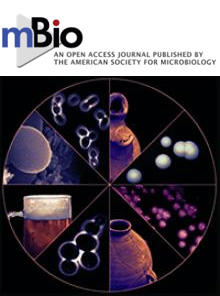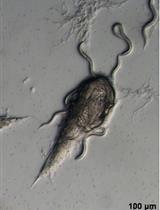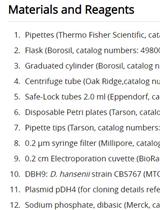- EN - English
- CN - 中文
Isolation and Characterization of Live Yeast Cells from Ancient Clay Vessels
从古代陶皿中分离鉴定活酵母细胞
(*contributed equally to this work) 发布: 2020年01月05日第10卷第1期 DOI: 10.21769/BioProtoc.3473 浏览次数: 6374
评审: David PaulFrancis FangMaría Victoria MartinAnonymous reviewer(s)
Abstract
Ancient fermented food has been studied mainly based on residue analysis and recipes and reconstruction attempts were performed using modern domesticated yeast. Furthermore, microorganisms which participated in fermentation were studied using ancient-DNA techniques. In a recent paper, we presented a novel approach based on the hypothesis that enriched yeast populations in fermented beverages could have become the dominant species in storage vessels and their descendants could be isolated and studied today. Here we present a pipeline for isolation of yeast from clay vessels uncovered in archeological sites and transferred to the microbiology lab where they can be isolated and characterized. This method opens new avenues for experimental archeology and enables attempts to recreate ancient food and beverages using the original microorganisms.
Keywords: Ancient pottery vessels (古代陶器)Background
Food ways and dietary habits, offer significant insight into subsistence strategies, connectivity and cultural and ideological choices of societies (Beaudry and Metheny, 2015). This direction of research is rather restricted when applied to ancient societies, as only residues of food have survived the absence of preservatives. Fragmentary evidence has impeded research of ancient fermented alcoholic beverages such as beer, wine, mead (honey wine) and kvass, which played a major role in daily life as well as in religious, social and political rituals of ancient societies (Joffe, 1998; Myers et al., 2000; Dietler, 2006; Legras et al., 2007; McGovern, 2009; Schiefenhövel and Macbeth, 2011; Hornsey, 2012; Parker and McCool, 2015).
Reconstruction of ancient fermented beverages has, until now, consisted of brewing modern ingredients according to ancient recipes or based on organic residue found in ancient containers or breweries. To achieve fermentation, previous efforts have used Saccharomyces cerevisiae, the domesticated commercial yeast species (McGovern, 2009; Stika, 2011). To the best of our knowledge, the study of ancient microorganisms, including bacteria (Donoghue et al., 2004; Andam et al., 2016), viruses (Muhlemann et al., 2018) and yeast (Cavalieri et al., 2003), was based on ancient DNA studies; no attempt has been made to isolate and reproduce microorganisms from containers used for the production of fermented beverages.
Hypothesizing that yeast can form stable colonies in clay nanopores, we were recently able to isolate live yeast cells from ancient containers thought to have contained beverages and oil, using the current protocol (Aouizerat et al., 2019). Following the isolation, we characterized the growth of the yeast, sequenced and analyze their full genome and used them to produce and analyze beer and mead (Aouizerat et al., 2019).
Thus, our research suggests that ancient microorganisms can be isolated from archaeological finds, facilitating the identification of additional ancient foods and beverages. It also promotes the field of “experimental archeology”: the recreation of the past, mainly of ancient fermented food (such as cheese and pickles) and beverages.
The following text presents a two-part protocol for the collection of sherds/vessels from archeological dig sites, as well as the isolation and characterization of microorganisms. Part I details guidelines for handling vessels intended for microorganisms’ isolation. Part II describes the isolation process. While this protocol was applied to yeast, it can be easily modified to apply to other microorganisms, such as bacteria.
Part I: Guidelines for the excavation and collection of clay vessels for microorganisms’ isolation (field work)
Materials and Reagents
- Lab gloves
- 50 ml Falcon tubes (MINIPLAST EIN SHEMER, catalog number: 835-050-21-111)
- Clean plastic container
- Aluminum foil
- Tube markers
Equipment
- Folding table
- Recording device/s including camera, tablet, laptop, and cellular phones
Procedure
文章信息
版权信息
© 2020 The Authors; exclusive licensee Bio-protocol LLC.
如何引用
Aouizerat, T., Maeir, A. M., Paz, Y., Gadot, Y., Szitenberg, A., Alkalay-Oren, S., Coppenhagen-Glazer, S., Klutstein, M. and Hazan, R. (2020). Isolation and Characterization of Live Yeast Cells from Ancient Clay Vessels. Bio-protocol 10(1): e3473. DOI: 10.21769/BioProtoc.3473.
分类
微生物学 > 微生物遗传学 > 转化
细胞生物学 > 细胞分离和培养 > 细胞分离
您对这篇实验方法有问题吗?
在此处发布您的问题,我们将邀请本文作者来回答。同时,我们会将您的问题发布到Bio-protocol Exchange,以便寻求社区成员的帮助。
Share
Bluesky
X
Copy link














